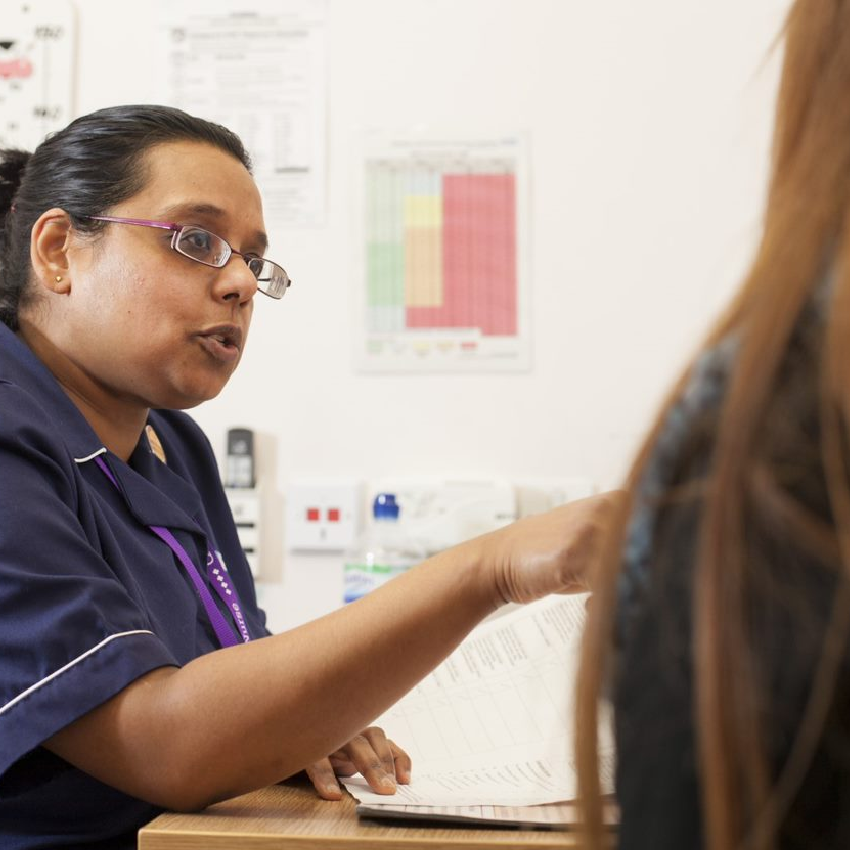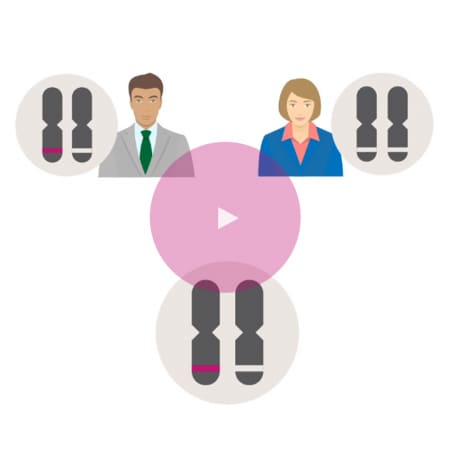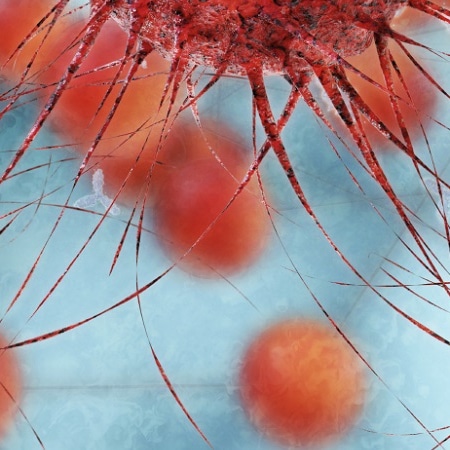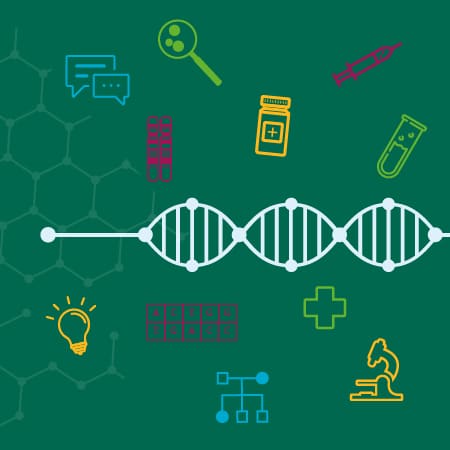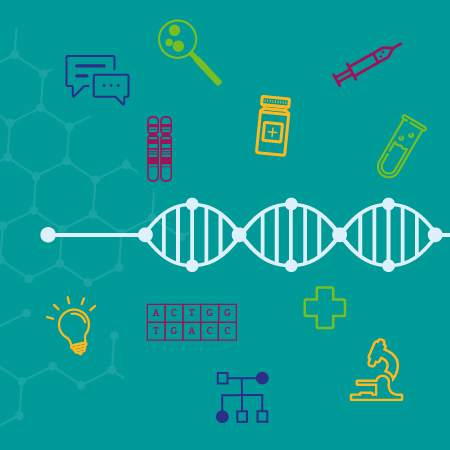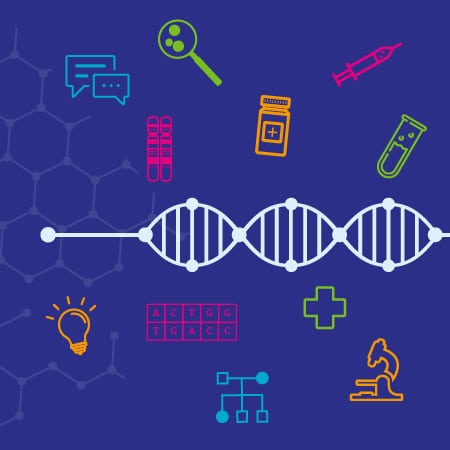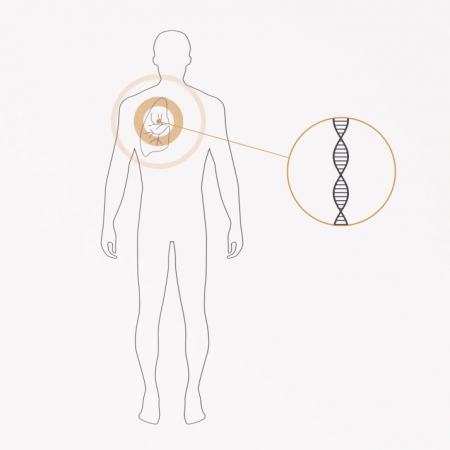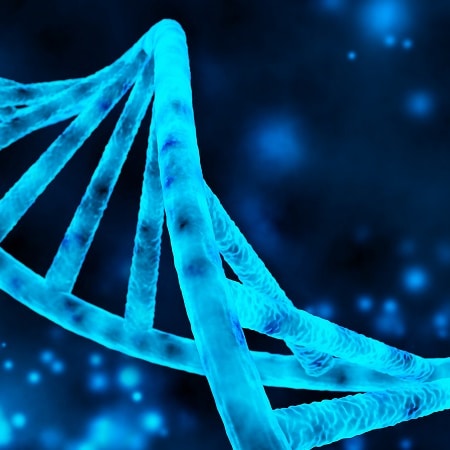In this teaching scenario, Louise explains the part genomics played in her ovarian cancer diagnosis, and her nurse provides an update nine years later about how things have changed
A woman with ovarian cancer talks about her experience of having two genomic tests: one to inform her treatment options, and the other to identify whether her cancer is due to an inherited variant in her DNA. Nine years later, Louise’s nurse explains how things have changed and how mainstreaming genomics is making a difference.
Read Louise’s story below and use the teaching moments and discussion points to design your teaching session.
AT-A-GLANCE
Clinical focus: Cancer
Nursing activities: Identification, diagnosis, treatment, management, communication, family care.
NMC platform and outcomes: 1 (1.2, 1.9, 1.11, 1.13, 1.18); 2 (2.2, 2.5, 2.9, 2.10); 3 (3.1, 3.2, 3.3, 3.5, 3.6, 3.11, 3.15); 4 (4.2, 4.3, 4.14, 4.15, 4.17); 5 (5.4); 7 (7.8)
Louise’s story
Louise: My diagnosis
1 My name is Louise. I am 37 and I have had treatment for ovarian cancer. My long-term prognosis is not great. I don’t think I will get to see my boys, aged five and seven, go to big school, but I’m hopeful we have another round of birthdays and summer holidays to enjoy.
2 As part of my diagnosis, I was tested to see if I have an alteration in my BRCA genes that might explain my cancer and inform my treatment. It turns out I do, in my BRCA1 gene. Knowing this, my oncologist was able to prescribe personalised treatment in the form of tablets, which meant no more needles, thankfully! Currently the treatment is holding my cancer at bay. I know it won’t get rid of it, but it does mean I have more precious time with my family and get to plan for the boys’ future with their dad. I’m making videos and writing letters for the boys to open in the future for big birthdays, starting university and the like, and letting them know how much I love them.
Louise: Genomic testing
3 Getting tested to see if I had a change in my BRCA genes really was tough for us as a family. Thank goodness our oncology team were so supportive. They are known as a ‘mainstreaming team’ as, at the same time as my cancer diagnosis, they also explained that due to my age and the type of cancer I had there was a possibility that genetics may contribute to the reason I had cancer. They asked me about any cancers in my family, on both sides, and built up a picture, like a family tree. By doing this, it turned out that that there were a number of family members on Dad’s side that had had cancers that could be attributed to genetics. His brother had prostate cancer and his aunt breast cancer, both at an early age. My Dad’s mum had a hysterectomy and her ovaries removed for “womens’ problems”, but we don’t know if that was cancer. Even though I knew about the cancer history in my family, drawing it out like this, I started to make links and join the dots.
4 I had two genetic tests: one on the fallopian tube and ovarian tumour tissue, and one on my blood. The first test confirmed that there was a BRCA1 change in the tumour DNA. Knowing this, my oncologist could get on and prescribe the personalised treatment straight away. The results from the blood test took longer, and to be honest that was a good thing as it helped let all the information sink in. We spent a lot of time with our cancer nurse as she explained the difference between the two types of test: the tumour test giving information just about me and my cancer, and the blood test looking to see if I was born with the BRCA1 change. This second test would indicate whether Mum, Dad, my sister, my boys had a 50% chance of also having the change, increasing their likelihood of developing certain cancers.
5 To be honest though, once I had the tumour test back, I just felt that it would be inevitable that I had the change in my blood. Although scared, I was grateful to have all the information from my cancer team.
Louise: Implications for the family
6 Turns out the change had come from Dad’s side. He was devastated that he had passed this on to me. This was the hardest part of knowing. My cancer team were great, and they organised for Mum and Dad to have a consultation with the clinical genetics team to talk their feelings through. The same was offered for my sister to help her decide if she wanted to get her blood tested to see if she had inherited the change too.
7 We talked to our cancer nurse about our little boys too. I was worried I could have passed the change on to them, she explained that they would be offered testing when older, but that it was unnecessary right now. This was a relief. My dad checked this out with the clinical genetics counsellor who explained the same thing, and actually used the same information leaflets. It was really reassuring that they were all saying the same thing!
Louise’s nurse: Nine years on
8 Louise’s story is nine years old. Much has changed since then. Back then, most genetic tests just looked for changes in the blood. However, most services now offer both tumour testing and the blood test. We now have four different types of the personalised treatment available. For prescribing purposes, we must test at point of cancer diagnosis as drug therapy potentially starts even earlier in the treatment pathway – actually, in the first-line setting. We have learned from our early experience of mainstreaming with patients like Louise and her family, and now have guidelines for practice, co-authored and peer reviewed by the multidisciplinary team, that look after such cases, supported by our clinical genetics colleagues’ knowledge.
9 We have listened to our patients and their families who have reassured us that they want the opportunity to undergo genomic testing to support their diagnosis/treatment options and to support family health knowledge. Our patients and families have reassured us, the healthcare professionals, that as long as we present the information in the same sensitive manner as their cancer diagnosis and treatment planning, the genomic element of care isn’t too scary or too much for them to take on. In fact, in some cases, patients tell us it helps to know it wasn’t something they had eaten, smoked or done wrong to cause their cancer.
10 Louise sadly died seven years ago. I remain in touch with her family who to this day remain grateful that Louise was offered genetic testing. I met with Louise’s husband, Giles, last year and we talked about next steps for their boys, with the eldest being 18 in two years’ time. I was able to reassure him that there is no hurry to get the boys tested. We revisited the information given to Louise and him at the time of returning results and discussed that when he feels ready he makes contact with clinical genetics via his GP to initiate pre-test counselling for his sons. This is an integral part of the mainstreaming role, highlighting the importance of good record keeping, failsafe mechanisms for continuity of care and excellent communication channels between secondary and primary care, and clinical genetics.
Educator touchpoints
Teaching moments
Paragraph 2 | What are the BRCA genes?
Paragraph 2 | What is meant by personalised treatment?
Paragraph 3 | What does mainstreaming mean?
Paragraph 3 | What types of cancers are inherited?
Paragraph 3 | What can a medical family tree tell you?
Paragraph 4 | Explore the differences between the tumour test and the blood test. What is each test looking for?
Paragraph 4 | Why do Louise’s sons each have a 50% chance of having the change?
Paragraph 7 | Why would testing only be offered to Louise’s sons when they were older?
Discussion points
Paragraph 2 | How would you manage supporting Louise given that treatment will only ‘keep the cancer at bay’?
Paragraph 3 | Explore the concept of a mainstreaming service in this context.
Paragraph 4 | Louise has a lot of information to take in. How should a nurse support her here?
Paragraph 5 | Why is Louise grateful to have all this information, even if it may not be positive?
Paragraph 5 | Louise talks about a ‘change’ in her blood. What is she actually referring to when she uses the word ‘change’?
Paragraph 6 | How could a nurse support Louise in delivering this news to her family?
Paragraph 8 | Why might it be important to test at the point of diagnosis?
Paragraph 10 | What might be some of the things to be mindful of when revisiting cases and providing continued support for the family?
Further learning
FOUNDATION KNOWLEDGE
A short animation to help explain dominant inheritance patterns
2 minutes
Learn about how genomic testing is being used to inform cancer diagnosis and treatment
30 minutes
Learn the different ways that genetic conditions can be inherited within a family
30 minutes
Learn about how a genetic family history can help to identify an inherited condition
30 minutes
Tips and tools for communicating with patients about genomics
30 minutes
Dr Claire Turnbull explains how experts are using genomics to transform cancer care
1 minute
EXTENDED LEARNING
Information on hereditary breast and ovarian cancer, available to read online or download
15 minutes


